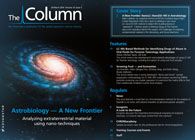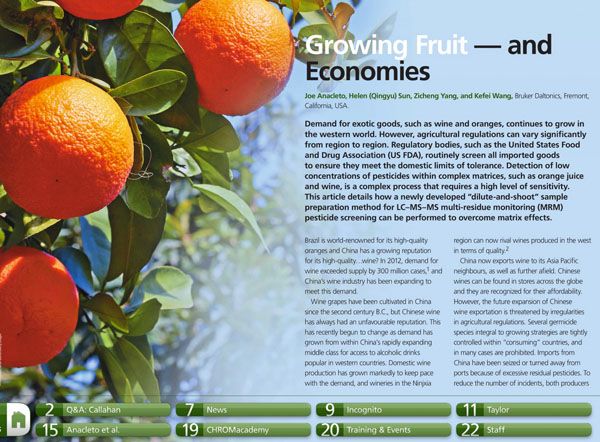Growing Fruit — and Economies
This article details how a newly developed ?dilute-and-shoot? sample preparation methodology for LC–MS–MS multi-residue monitoring (MRM) pesticide screening can enable operators to overcome the matrix effects that have traditionally hindered routine food analysis.
Demand for exotic goods, such as wine and oranges, continues to grow in the western world. However, agricultural regulations can vary significantly from region to region. Regulatory bodies, such as the United States Food and Drug Association (US FDA), routinely screen all imported goods to ensure they meet the domestic limits of tolerance. Detection of low concentrations of pesticides within complex matrices, such as orange juice and wine, is a complex process that requires a high level of sensitivity. This article details how a newly developed “dilute-and-shoot” sample preparation method for LC–MS–MS multi-residue monitoring (MRM) pesticide screening can be performed to overcome matrix effects.

University of Tasmania Researchers Explore Haloacetic Acid Determiniation in Water with capLC–MS
April 29th 2025Haloacetic acid detection has become important when analyzing drinking and swimming pool water. University of Tasmania researchers have begun applying capillary liquid chromatography as a means of detecting these substances.
Analytical Challenges in Measuring Migration from Food Contact Materials
November 2nd 2015Food contact materials contain low molecular weight additives and processing aids which can migrate into foods leading to trace levels of contamination. Food safety is ensured through regulations, comprising compositional controls and migration limits, which present a significant analytical challenge to the food industry to ensure compliance and demonstrate due diligence. Of the various analytical approaches, LC-MS/MS has proved to be an essential tool in monitoring migration of target compounds into foods, and more sophisticated approaches such as LC-high resolution MS (Orbitrap) are being increasingly used for untargeted analysis to monitor non-intentionally added substances. This podcast will provide an overview to this area, illustrated with various applications showing current approaches being employed.

.png&w=3840&q=75)

.png&w=3840&q=75)



.png&w=3840&q=75)



.png&w=3840&q=75)












